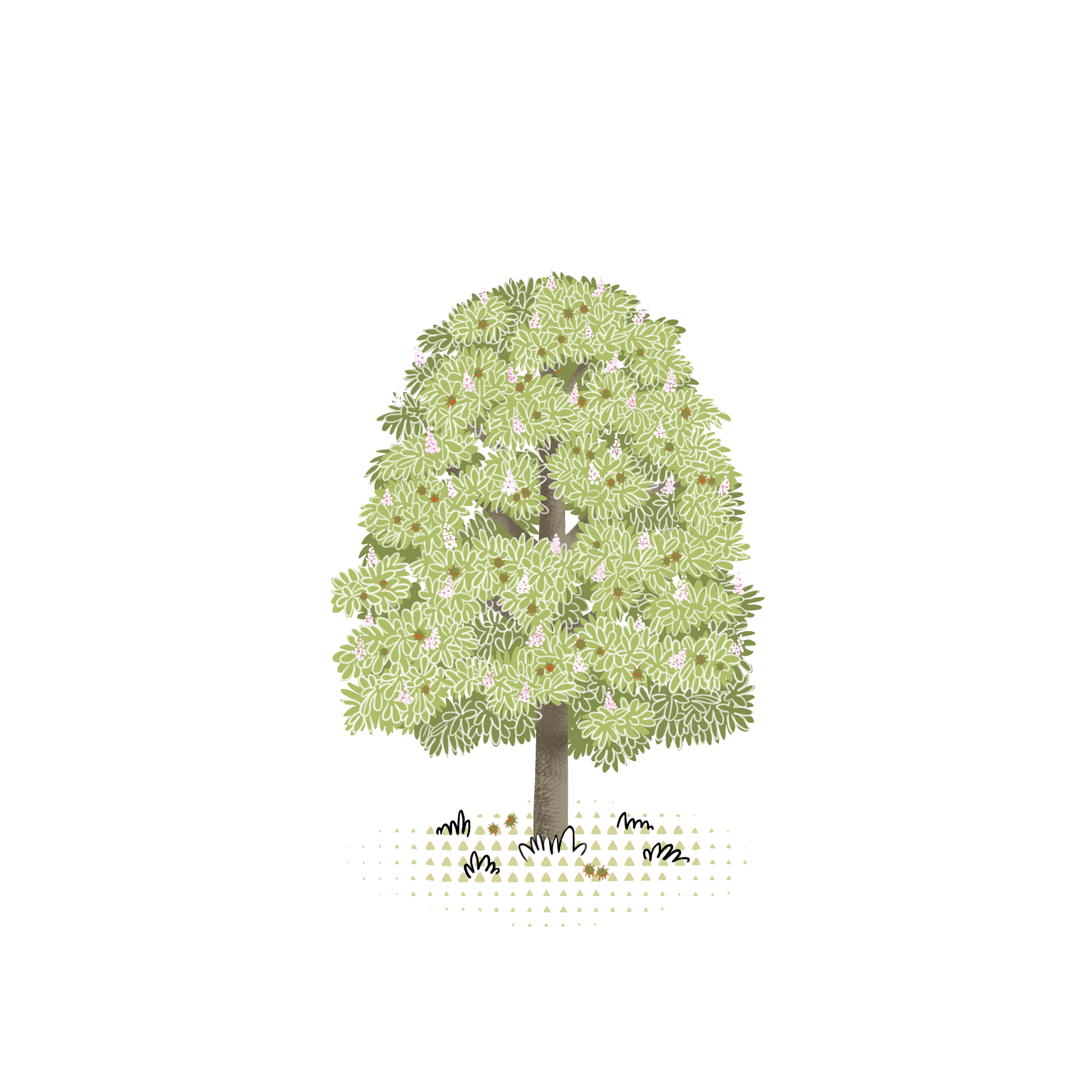
Horse chestnut
Animal lovers
Who wants to say "thank you"
Wisest people
Horse chestnut is a large tree that can reach 30 meters in height. It comes from the Greek word for "horse chestnut" since its fruit was reputed to be healing for horses' coughs. Up until a few years ago, with the onset of fall, two or three chestnuts were stuffed into children's pockets, with the widespread belief that this served to ward off flu germs. To be given as a gift to those in need of protection.
Scientific name: Aesculus hippocastanum
Common name: Horse chestnut
It is native to Albania and Greece, but is widespread throughout Europe. It is part of the Sapindaceae family, from which it gets its elegant and majestic bearing. It reaches a height of 25 to 30 meters and is noted for its strange fruits (they are actually the seeds) similar to chestnuts, often called "false chestnuts." Beware, because they are not edible given their high saponin concentration. We might guess it, since the true fruits of the horse chestnut are the large greenish capsules covered with spines that protect the large brown seed. In general, horse chestnuts can be recognized by their palmate leaves and light-colored panicle inflorescence. Over time, the color of the flower spots changes from yellow to orange and finally red, to warn insects that there is no more nectar to be taken.
The tree produces a sugary nectar that bees are fond of. So why is it that we do not find honey from but do not find it on supermarket shelves? The plant is widespread in city boulevards, so it tends to absorb large amounts of pollutants. In addition, its flowering partly overlaps with the time when bees use honey to bring nourishment to the hive.
Horse chestnut can be used for decoction, gels, ointments, as well as capsules. Thanks to saponins and flavonoids, it is effective in countering venous insufficiency and capillary fragility.
What makes it unique
of CO2 captured over a year
reachable height
maximum life expectancy


